结论--优势不再,但依然很好
CMF Phone 2 Pro 是 CMF Phone 1 的后继机型。CMF Phone 1 最初是为印度市场设计的,现在面向全球市场--包括 NFC,但只在日本使用 eSIM。
带有独特螺钉的塑料外壳外观时尚,但不再可拆卸。虽然保留了 microSD 插槽,但 Wi-Fi 的速度相当慢。OLED 显示屏的高亮度和色彩深度给人留下了深刻印象,尽管 PWM 在低亮度时效果并不理想。
三摄像头可提供清晰的照片,包括光学变焦,但没有图像稳定功能。联发科 Dimensity 7300 可确保良好的日常性能,但在高强度使用时会显示出弱点。
电池续航时间长、清晰的振动反馈和生物识别解锁方法是其积极的特点。软件基于Android 15 和 NothingOS 3.2,并承诺六年更新一次。
Pros
Cons
价格和供应情况
CMF Phone 2 Pro 可直接从购买。.遗憾的是,在撰写这篇评论时,亚马逊网站上还没有这款产品。
CMF Phone 2 Pro 的前身是 CMF Phone 1最初只计划在印度市场推出,因此不带 NFC 功能。
由于它的巨大成功,Nothing 开始考虑更大的市场,并在全球市场(除印度外)全面采用 NFC 技术,但 eSIM 只适用于日本机型。
虽然制造商并没有完全放弃模块化方法,但它的限制更多了。请阅读评测,了解 CMF Phone 是否丧失了自己的优势之一。
规格CMF Phone 2 Pro
外壳和功能 - CMF Phone 2 Pro 配备 NFC 功能
CMF Phone 2 Pro 采用塑料外壳(绿色、白色、黑色或橙色),背面仍有突出的螺丝。这些螺丝也可以取下,但外壳不再可拆卸。太可惜了,CMF 在这里浪费了一些潜力。配件按钮依然存在,但现在已与背面齐平。
虽然新增了对 NFC 的支持,但仍保留了对 microSD 的支持,这在同价位产品中并不常见。遗憾的是,该插槽在拷贝测试中速度非常慢,但也支持 exFAT 文件系统。
与 Nothing 的最新兄弟产品一样,2 Pro 也拥有 Nothing AI Essential Space 和电源键下方的相应按钮。这是一个不错的功能,可以用来整理自己的想法和笔记。
» Notebookcheck多媒体笔记本电脑Top 10排名
» Notebookcheck游戏笔记本电脑Top 10排名
» Notebookcheck低价办公/商务笔记本电脑Top 10排名
» Notebookcheck高端办公/商务笔记本电脑Top 10排名
» Notebookcheck工作站笔记本电脑Top 10排名
» Notebookcheck亚笔记本电脑Top 10排名
» Notebookcheck超级本产品Top 10排名
» Notebookcheck变形本产品Top 10排名
» Notebookcheck平板电脑Top 10排名
» Notebookcheck智能手机Top 10排名
» Notebookcheck评测过最出色的笔记本电脑屏幕
» Notebookcheck售价500欧元以下笔记本电脑Top 10排名
» Notebookcheck售价300欧元以下笔记本电脑Top 10排名
尺寸比较
| SD Card Reader - average JPG Copy Test (av. of 3 runs) | |
| Motorola Moto G75 (Angelbird V60) | |
| Average of class Smartphone (5.72 - 58.9, n=69, last 2 years) | |
| CMF Phone 2 Pro (Angelbird AV Pro V60) | |
Cross Platform Disk Test (CPDT)
通信和操作 - CMF Phone 2 Pro 中的慢速 Wi-Fi 6
由于天线数量较少,CMF Phone 2 Pro 的 Wi-Fi 模块只能以 Wi-Fi 5 的速度传输数据,这在大多数情况下不成问题。不过,如果需要传输较大的数据量,则需要较长的时间。
在移动无线电频率方面,这款智能手机配备齐全,但它并非全球通用。接收特性良好。不过,在屏蔽良好的地方,它很快就会达到极限。
语音质量自然入耳,只有嘈杂的背景噪音几乎没有被过滤掉。扬声器的音质很吸引人,但扬声器似乎有些狭窄,声音输出略显单调。
生物识别安全由显示屏上的光学指纹传感器提供,识别率高,解锁速度快。还可通过前置摄像头进行人脸识别。线性振动电机可提供清晰的触觉反馈。
| Networking | |
| CMF Phone 2 Pro | |
| iperf3 transmit AXE11000 | |
| iperf3 receive AXE11000 | |
| Xiaomi Poco X7 | |
| iperf3 transmit AXE11000 | |
| iperf3 receive AXE11000 | |
| Samsung Galaxy A36 5G | |
| iperf3 transmit AXE11000 | |
| iperf3 receive AXE11000 | |
| Motorola Moto G75 | |
| iperf3 transmit AXE11000 6GHz | |
| iperf3 receive AXE11000 6GHz | |
| Average 802.11 a/b/g/n/ac/ax | |
| iperf3 transmit AXE11000 | |
| iperf3 receive AXE11000 | |
| iperf3 transmit AXE11000 6GHz | |
| iperf3 receive AXE11000 6GHz | |
| Average of class Smartphone | |
| iperf3 transmit AXE11000 | |
| iperf3 receive AXE11000 | |
| iperf3 transmit AXE11000 6GHz | |
| iperf3 receive AXE11000 6GHz | |
软件和可持续性 - 6 年更新
CMF Phone 2 Pro 预装了 GoogleAndroid 15 和 NothingOS 3.2。它将接受三年的主要更新和总共六年的安全补丁。其界面与 Nothing Phone 完全相同。
这款智能手机装在一个超薄的硬纸盒中,不含塑料。Nothing 没有提供关于 CMF Phone 使用回收材料的确切细节。
摄像头 - CMF Phone 2 Pro 的光学变焦
Image comparison
Choose a scene and navigate within the first image. One click changes the position on touchscreens. One click on the zoomed-in image opens the original in a new window. The first image shows the scaled photograph of the test device.
HauptkameraHauptkameraUltraweitwinkel5-facher ZoomLow-Light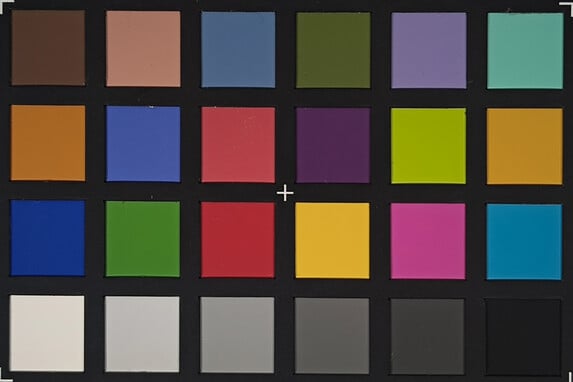

显示屏 - 高达 1,300 cd/m² 的精确 OLED 显示屏
| |||||||||||||||||||||||||
Brightness Distribution: 97 %
Center on Battery: 1280 cd/m²
Contrast: ∞:1 (Black: 0 cd/m²)
ΔE ColorChecker Calman: 1.3 | ∀{0.5-29.43 Ø4.78}
ΔE Greyscale Calman: 2 | ∀{0.09-98 Ø5}
97% sRGB (Calman 2D)
Gamma: 2.14
CCT: 6776 K
| CMF Phone 2 Pro AMOLED, 2400x1080, 6.8" | Xiaomi Poco X7 AMOLED, 2712x1220, 6.7" | Samsung Galaxy A36 5G Super AMOLED, 2340x1080, 6.7" | Motorola Moto G75 IPS, 2388x1080, 6.8" | |
|---|---|---|---|---|
| Screen | 6% | -6% | -30% | |
| Brightness middle (cd/m²) | 1280 | 1156 -10% | 1127 -12% | 947 -26% |
| Brightness (cd/m²) | 1277 | 1150 -10% | 1137 -11% | 946 -26% |
| Brightness Distribution (%) | 97 | 98 1% | 98 1% | 95 -2% |
| Black Level * (cd/m²) | 0.46 | |||
| Colorchecker dE 2000 * | 1.3 | 1.1 15% | 1.8 -38% | 2.53 -95% |
| Colorchecker dE 2000 max. * | 3.9 | 3.1 21% | 2.8 28% | 4.91 -26% |
| Greyscale dE 2000 * | 2 | 1.6 20% | 2.1 -5% | 2.1 -5% |
| Gamma | 2.14 103% | 2.22 99% | 2.11 104% | 2.237 98% |
| CCT | 6776 96% | 6304 103% | 6466 101% | 6733 97% |
| Contrast (:1) | 2059 |
* ... smaller is better
| Display | |
| APL18 Peak Brightness | |
| Samsung Galaxy A36 5G | |
| CMF Phone 2 Pro | |
| Xiaomi Poco X7 | |
| HDR Peak Brightness | |
| Xiaomi Poco X7 | |
| Samsung Galaxy A36 5G | |
| CMF Phone 2 Pro | |
Screen Flickering / PWM (Pulse-Width Modulation)
| Screen flickering / PWM detected | 90 Hz Amplitude: 13.04 % Secondary Frequency: 769 Hz | ||
The display backlight flickers at 90 Hz (worst case, e.g., utilizing PWM) . The frequency of 90 Hz is very low, so the flickering may cause eyestrain and headaches after extended use. In comparison: 53 % of all tested devices do not use PWM to dim the display. If PWM was detected, an average of 8111 (minimum: 5 - maximum: 343500) Hz was measured. | |||
固定缩放级别和不同亮度设置下的测量系列(最低亮度下的振幅曲线看起来很平,但这是缩放造成的。信息框显示的是最小亮度下的振幅放大图)
Display Response Times
| ↔ Response Time Black to White | ||
|---|---|---|
| 0.93 ms ... rise ↗ and fall ↘ combined | ↗ 0.48 ms rise | |
| ↘ 0.45 ms fall | ||
| The screen shows very fast response rates in our tests and should be very well suited for fast-paced gaming. In comparison, all tested devices range from 0.1 (minimum) to 240 (maximum) ms. » 3 % of all devices are better. This means that the measured response time is better than the average of all tested devices (20.2 ms). | ||
| ↔ Response Time 50% Grey to 80% Grey | ||
| 0.54 ms ... rise ↗ and fall ↘ combined | ↗ 0.258 ms rise | |
| ↘ 0.286 ms fall | ||
| The screen shows very fast response rates in our tests and should be very well suited for fast-paced gaming. In comparison, all tested devices range from 0.165 (minimum) to 636 (maximum) ms. » 1 % of all devices are better. This means that the measured response time is better than the average of all tested devices (31.6 ms). | ||
性能、排放和电池寿命
CMF Phone 2 Pro 配备了 联发科 Dimensity 7300内存。这在很大程度上保证了系统性能的流畅,但可能会有些生涩,尤其是在使用要求较高的应用程序或后台运行更新时。图形处理能力足以应付简单的游戏,但对于现代游戏,则需要降低细节级别。
在持续负载的情况下,Phone 2 Pro 的表面温度会急剧升高,但仍不会让人感到不适。SoC 也没有因此而减速。
单声道扬声器的音效并不出众。幸运的是,CMF 智能手机提供了相当广泛的蓝牙编解码器。
电池续航时间也很不错,这意味着大多数用户一次充电可以轻松使用两天。
| Geekbench AI | |
| Single Precision TensorFlow NNAPI 1.2 | |
| Samsung Galaxy A36 5G | |
| CMF Phone 2 Pro | |
| Average of class Smartphone (51 - 2472, n=54, last 2 years) | |
| Average MediaTek Dimensity 7300 (137 - 564, n=5) | |
| Motorola Moto G75 | |
| Xiaomi Poco X7 | |
| Half Precision TensorFlow NNAPI 1.2 | |
| CMF Phone 2 Pro | |
| Average of class Smartphone (51 - 9453, n=54, last 2 years) | |
| Average MediaTek Dimensity 7300 (136 - 1342, n=5) | |
| Samsung Galaxy A36 5G | |
| Motorola Moto G75 | |
| Xiaomi Poco X7 | |
| Quantized TensorFlow NNAPI 1.2 | |
| CMF Phone 2 Pro | |
| Average of class Smartphone (123 - 13084, n=54, last 2 years) | |
| Average MediaTek Dimensity 7300 (397 - 2786, n=5) | |
| Samsung Galaxy A36 5G | |
| Motorola Moto G75 | |
| Xiaomi Poco X7 | |
(-) The maximum temperature on the upper side is 49.8 °C / 122 F, compared to the average of 35.2 °C / 95 F, ranging from 21.9 to 247 °C for the class Smartphone.
(-) The bottom heats up to a maximum of 48.9 °C / 120 F, compared to the average of 34 °C / 93 F
(+) In idle usage, the average temperature for the upper side is 27.8 °C / 82 F, compared to the device average of 32.9 °C / 91 F.
3DMark Steel Nomad Stress Test
| 3DMark | |
| Wild Life Stress Test Stability | |
| Motorola Moto G75 | |
| Xiaomi Poco X7 | |
| Samsung Galaxy A36 5G | |
| CMF Phone 2 Pro | |
| Steel Nomad Light Stress Test Stability | |
| Motorola Moto G75 | |
| Xiaomi Poco X7 | |
CMF Phone 2 Pro audio analysis
(+) | speakers can play relatively loud (94 dB)
Bass 100 - 315 Hz
(-) | nearly no bass - on average 21.2% lower than median
(+) | bass is linear (2.3% delta to prev. frequency)
Mids 400 - 2000 Hz
(±) | reduced mids - on average 5.9% lower than median
(+) | mids are linear (4.7% delta to prev. frequency)
Highs 2 - 16 kHz
(±) | higher highs - on average 10.3% higher than median
(+) | highs are linear (4.3% delta to prev. frequency)
Overall 100 - 16.000 Hz
(±) | linearity of overall sound is average (19.6% difference to median)
Compared to same class
» 29% of all tested devices in this class were better, 8% similar, 63% worse
» The best had a delta of 11%, average was 35%, worst was 134%
Compared to all devices tested
» 48% of all tested devices were better, 7% similar, 45% worse
» The best had a delta of 4%, average was 24%, worst was 134%
Samsung Galaxy A36 5G audio analysis
(+) | speakers can play relatively loud (90.5 dB)
Bass 100 - 315 Hz
(-) | nearly no bass - on average 26.4% lower than median
(±) | linearity of bass is average (7.3% delta to prev. frequency)
Mids 400 - 2000 Hz
(±) | reduced mids - on average 6.1% lower than median
(+) | mids are linear (4.3% delta to prev. frequency)
Highs 2 - 16 kHz
(+) | balanced highs - only 3% away from median
(+) | highs are linear (1.8% delta to prev. frequency)
Overall 100 - 16.000 Hz
(±) | linearity of overall sound is average (17.9% difference to median)
Compared to same class
» 15% of all tested devices in this class were better, 8% similar, 76% worse
» The best had a delta of 11%, average was 35%, worst was 134%
Compared to all devices tested
» 36% of all tested devices were better, 8% similar, 56% worse
» The best had a delta of 4%, average was 24%, worst was 134%
| Battery runtime - WiFi v1.3 | |
| CMF Phone 2 Pro | |
| Xiaomi Poco X7 | |
| Samsung Galaxy A36 5G | |
| Motorola Moto G75 | |
Notebookcheck 总体评分
尽管 CMF Phone 2 Pro 拥有大尺寸显示屏和电池,但却相当轻巧坚固。
遗憾的是,它不再像前代产品那样采用模块化设计,但整体包装仍然很有吸引力。
CMF Phone 2 Pro
- 06/20/2025 v8
Daniel Schmidt
可比较的替代品
Transparency
The selection of devices to be reviewed is made by our editorial team. The test sample was given to the author by the manufacturer free of charge for the purposes of review. There was no third-party influence on this review, nor did the manufacturer receive a copy of this review before publication. There was no obligation to publish this review. As an independent media company, Notebookcheck is not subjected to the authority of manufacturers, retailers or publishers.
This is how Notebookcheck is testing
Every year, Notebookcheck independently reviews hundreds of laptops and smartphones using standardized procedures to ensure that all results are comparable. We have continuously developed our test methods for around 20 years and set industry standards in the process. In our test labs, high-quality measuring equipment is utilized by experienced technicians and editors. These tests involve a multi-stage validation process. Our complex rating system is based on hundreds of well-founded measurements and benchmarks, which maintains objectivity. Further information on our test methods can be found here.




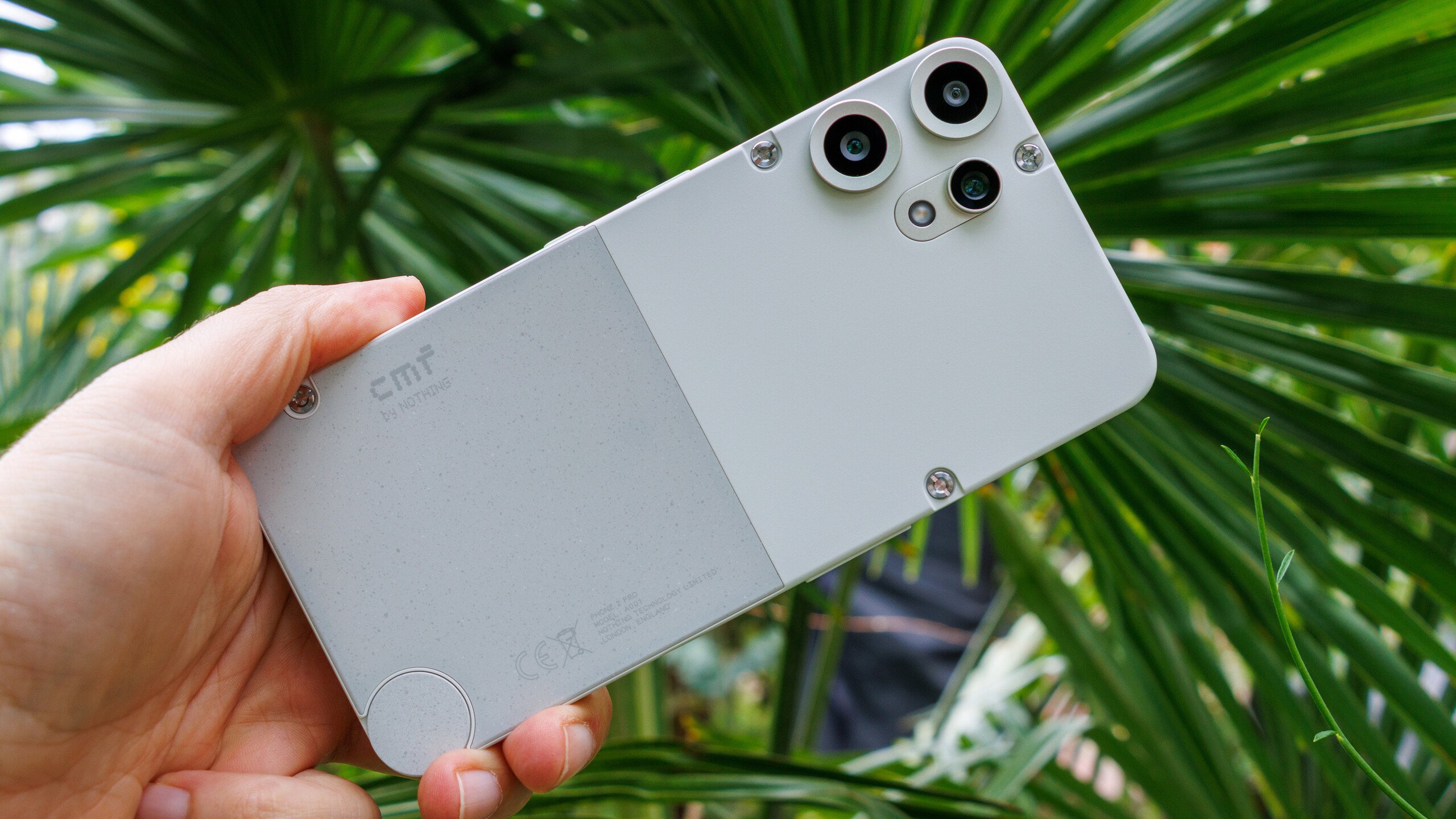

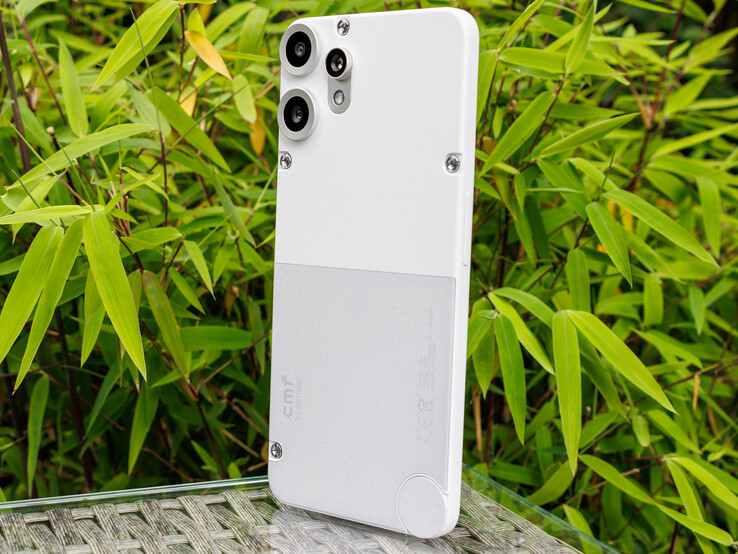





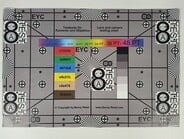

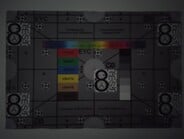

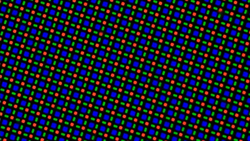
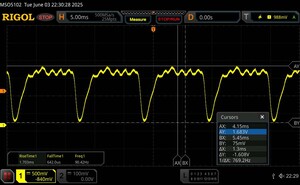





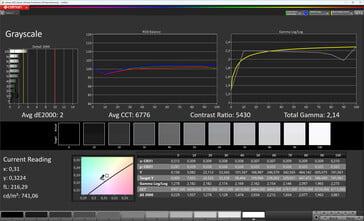
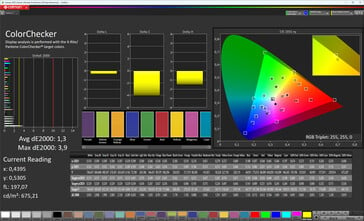
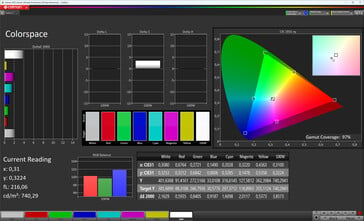
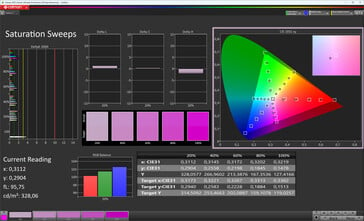
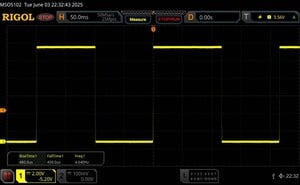
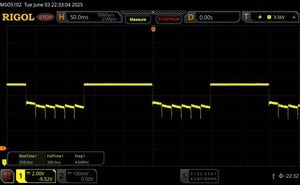
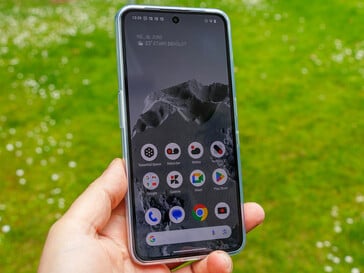
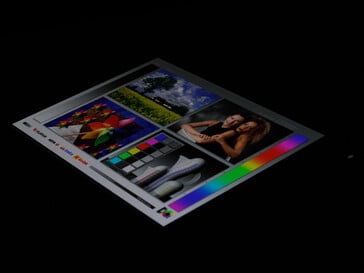
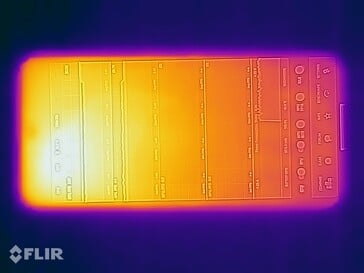
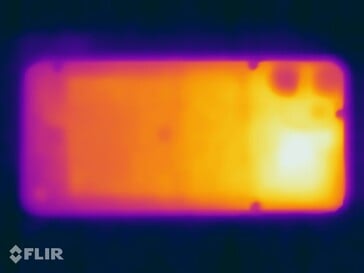
 Total Sustainability Score:
Total Sustainability Score: 
